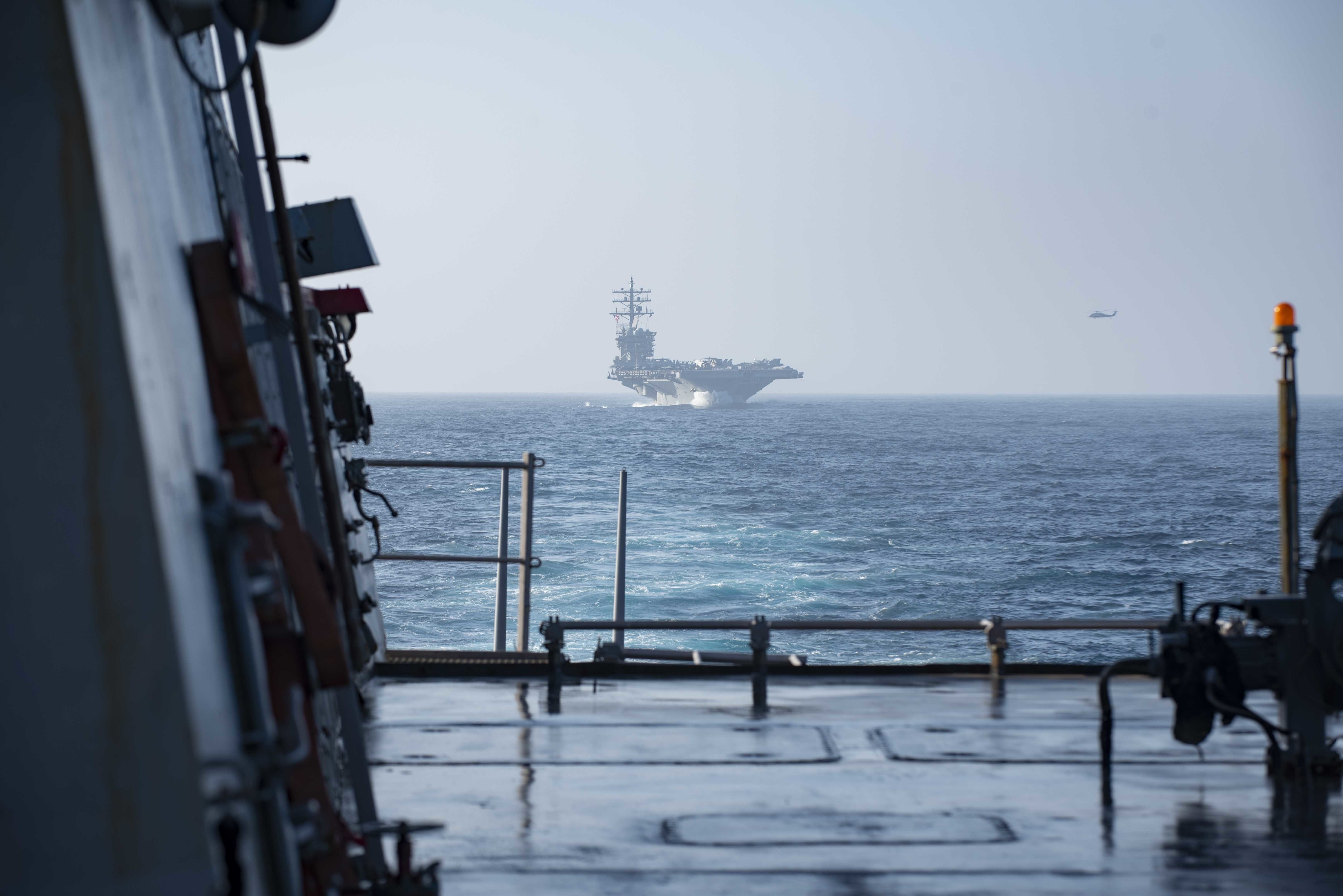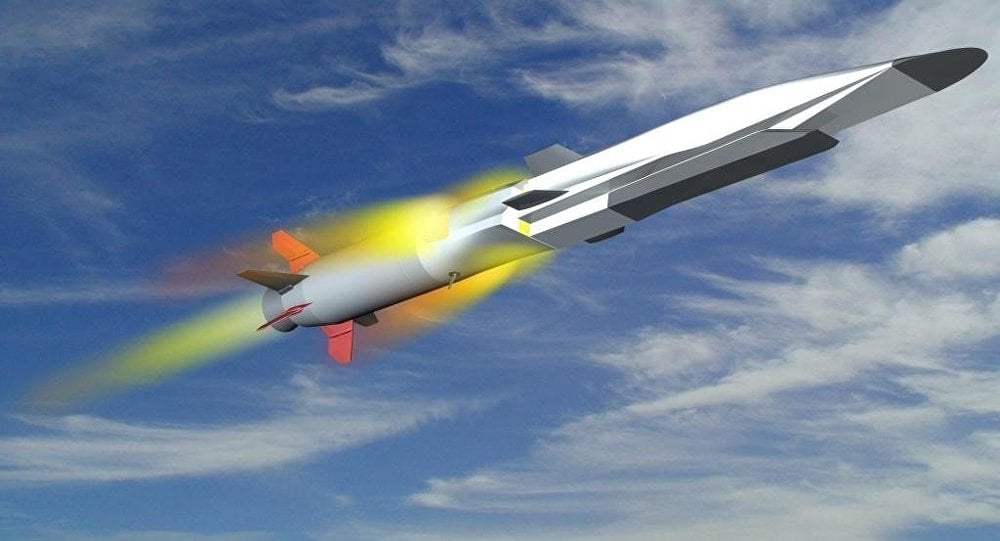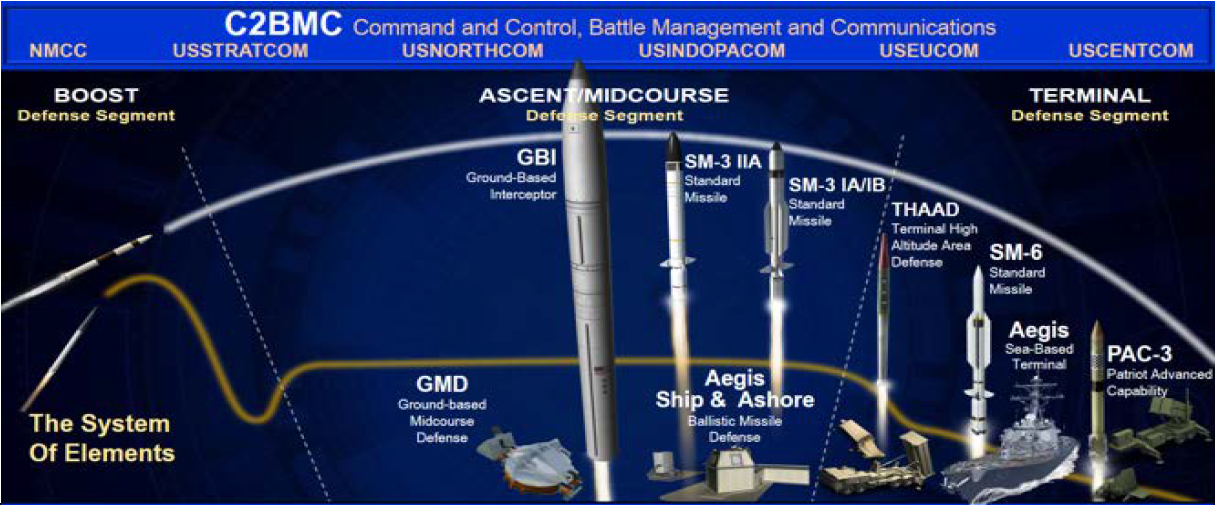Sam LaGrone

U.S. aircraft carriers are already facing risks from hypersonic weapons that are now entering the inventory of American adversaries and the Navy has developed early defenses for the threat, the head of the U.S. Missile Defense Agency said last week before the Senate.
“It’s important that we have that capability now because the hypersonic threat is there now,” Vice Adm. Jon Hill, director of the Missile Defense Agency, told the Senate Armed Services subcommittee on strategic forces last week.
Within the last few years, both China and Russia have fielded early versions of hypersonic weapons that can travel faster than five times the speed of sound (Mach 5 is about 3,806 mph) and potentially hold U.S. capital ships at risk. Unlike the explosive supersonic cruise missile threats the carrier’s Aegis escorts are designed to fight, the new weapons travel at higher speed and can make unexpected changes in flight on their way to their targets.
The Russians have already fielded the Kinzhal – a maneuverable ballistic missile that can be launched from MiG-31 and Su-34 fighters.
Russian Zircon hypersonic missile.
Moscow is also “developing Zircon, a ship-launched hypersonic cruise missile capable of traveling at speeds of between Mach 6 and Mach 8. Zircon is reportedly capable of striking both ground and naval targets,” according to a report from the Congressional Research Service.
China has tested versions of its DF-17 missile that was developed to carry the Chinese-built DF-Z hypersonic glide vehicle capable of “extreme maneuvers,” reported The Diplomat.
MDA’s “approach for regional hypersonic defense will first focus on defense in the terminal phase. Information superiority is critical to the future battlefield and is necessary to enable rapid planning and employment in a joint operating environment,” Hill said.
The Navy will, for now, interdict hypersonic weapons as part of a current ballistic missile defense ability aboard Aegis guided-missile destroyers, Hill told the panel. The Navy’s Aegis Ballistic Missile Defense terminal inception capability with the Standard Missile 6 is the first step toward intercepting hypersonic threats.
MDA image
“Little bit on Aegis sea-based terminal [intercepts]. That is the first regional hypersonic missile defense capability that is deployed with the aircraft carrier strike groups today,” Hill told the Senate panel. “And it’s important that we have that capability now because the hypersonic threat is there now. What we want to do is move further back into that trajectory, engage earlier, make the terminal defense even better. And so, the glide phase interceptor is under acceleration in the [Fiscal Year 2022] budget.”
The MDA asked for $248 million in the FY 2022 budget to develop defenses against hypersonic weapons, with the bulk of the funds going toward GPI development, Michelle Atkinson, MDA’s director of operations, told reporters during the late May budget rollout.
The GPI will work with the emerging hypersonic and ballistic tracking space sensor (HBTTS) that will provide targeting information to MDA interceptors.
“HBTSS is on the path to launch two interoperable satellites that are built by two separate industry partners. So the idea is to keep competition in early, given the complexity of the mission. It is the only program within the space portfolio that provides fire control quality data down to a weapon system like glide phase interceptor,” Hill told reporters during the budget presentation.
MDA awarded Northrop Grumman and L3Harris a combined $276 million in contracts in January to each develop a test satellite, according to Space News. MDA asked for $260 million in FY 2022 to continue HBTSS development, Hill said during the budget rollout.
SM-6 launches from guided-missile destroyer USS John Paul Jones on Aug. 29, 2017. MDA Photo
GPI, ”ties right into HBTSS, ties right into land-based sensors and sea-based sensors that can give us the fuse track that we need to take a hypersonic maneuvering capability out in the glide phase, and then we hit it again in terminal,” Hill told the Senate last week.
“That’s typically where you will start on taking on that kind of threat. It happens to be in the hardest environment though, right? You’re in the atmosphere, you’re maneuvering. But we do have that – the capability deployed today and we’re continuing to improve it.”



No comments:
Post a Comment